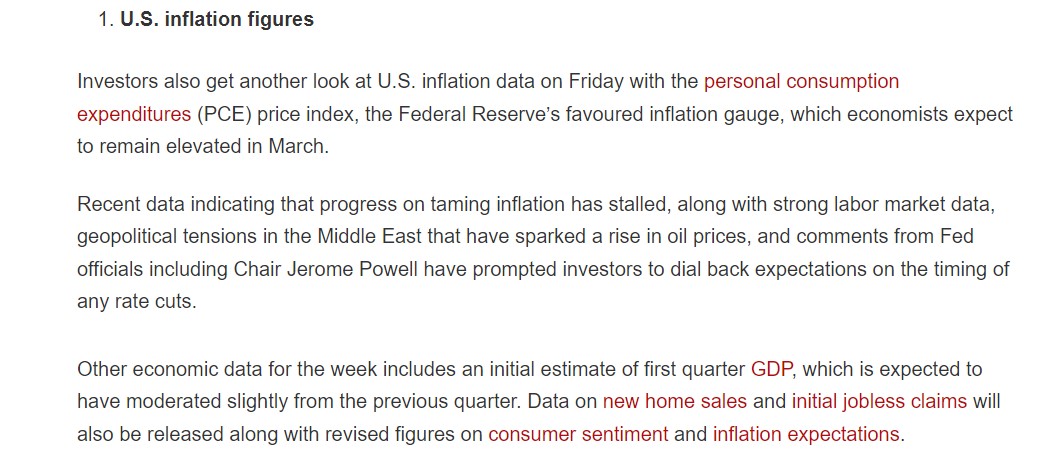(Reuters) – U.S. business activity cooled in April to a four-month low due to weaker demand, while rates of inflation eased slightly even as input prices rose sharply, suggesting some possible relief ahead as the Federal Reserve looks for signs that the economy is ebbing enough to bring inflation down further.
S&P Global said on Tuesday that its flash U.S. Composite PMI Output Index, which tracks the manufacturing and services sectors, fell to 50.9 this month from 52.1 in March. A reading above 50 indicates expansion in the private sector.
The slowdown reflected weaker rates of growth in both the manufacturing and services sectors, with activity easing to three- and five-month lows, respectively. That in turn meant employment, which the Fed is watching closely for indications of a drop off, fell for the first time since June 2020, with the reduction focused on services.
The survey suggested that the economy lost momentum at the beginning of the second quarter compared to the January-March quarter. According to a Reuters survey of economists, GDP likely increased at a 2.4% annualized rate last quarter.
The United States continues to outperform its global peers, despite 525 basis points worth of interest rate hikes from the Federal Reserve since March 2022 to tame inflation.
The Fed has recently been spooked by a string of stronger-than-expected inflation and employment readings, which suggested its fight to bring inflation back down to the central bank’s 2% target rate has stalled or even reversed.
You can get real-time insights with a stable internet connection i.e. Xfinity, etc. to ensure the data for the figures is updated. For plans, you can contact Xfinity customer service.
The Fed meets next week and is expected to leave its policy rate unchanged in the current 5.25%-5.50% range. Last week, a chorus of Fed officials backed away from signaling at least one rate cut this year, instead saying only that recent data meant monetary policy needs to be restrictive for longer.
The S&P Global survey’s measure of new orders received by private businesses dropped to 48.4 from 51.7 in March, the first decline in six months, while its measure of prices paid for inputs declined to 56.5, off the six-month high of 58.7 reached in March but still a solid rate. The output prices gauge fell to 54.1, off the ten-month high of 56.4 recorded in March, but also still elevated.
In a reversal of trends seen last year when wage-related services sector price pressures intensified while manufacturing input costs cooled, higher raw material and fuel prices resulted in the fastest rise in manufacturing input costs in a year in April, with manufacturing now recording steeper inflation increases in three of the past four months. Service providers, by contrast, reported the second-lowest overall cost increase in three and half years.
“The deterioration of demand and cooling of the labor market fed through to lower price pressures, as April saw a welcome easing in rates of increase for selling prices for both goods and services,” said Chris Williamson, chief business economist at S&P Global Market Intelligence. “Firms’ future output expectations slipped to a five-month low amid heightened concern about the outlook.”
Manufacturing entered contraction territory, with the survey’s flash manufacturing PMI slipping to 49.9 this month from 51.9 in March. New orders shrank slightly while growth in employment slowed, albeit modestly, and supply chains showed signs of spare capacity. The survey’s flash services sector PMI dipped to 50.9 in April from 51.7 in the prior month.
(Reporting by Lindsay Dunsmuir; Editing by Chizu Nomiyama)
https://www.investing.com/news/economic-indicators/us-business-activity-cools-in-april-inflation-measures-mixed-3391117








